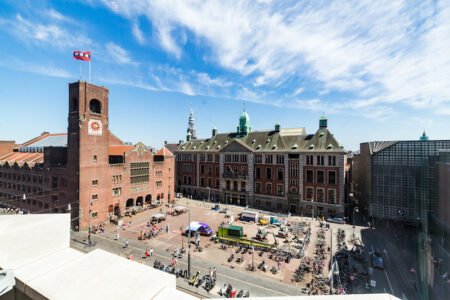Restless robots

Sugar and chocolate confectioners face a number of challenges today. From picky consumers and expensive ingredients to healthy eating trends that mean shoppers head for the fruit and vegetable aisle, the way that confectionery is purchased and consumed is certainly changing.
In an attempt to remain competitive, UK confectionery producers are increasingly looking for innovative ways to re-engage the interest of customers. Some invest in new products, others change the way their products are packaged and sold.
One trend that seems to be dominating the market is the sale of bite-sized multipack products. As consumers shift away from indulgent purchases of single treat bars, UK confectioners are providing the freedom of choice in the form of variety packs.
Such manufacturing requires inherent flexibility; robot technology can provide the responsiveness needed to pick, place or pack varying sweets presented on the production line.
Integrated vision technology
This is largely due to developments such as integrated vision technology. Through combining the intelligence of a robot, camera and robot programming software, robots can effectively recognise differing products through their size, shape and colour. They will then respond as they have been programmed to upon recognition of the product. One example is Mondelēz International, a division of Kraft Foods (formerly Cadbury), which introduced an automated robot distribution system at its Bournville facility in the UK. Used in the packing of Cadbury Roses and Heroes, the system uses integrated vision technology to ensure the correct quantity of assorted chocolates are packed in each container. This has helped to significantly increase the efficiency of the site’s previous set-up, where 10 varieties of Roses chocolates and six types of Heroes chocolates were manually fed to the automated packing line.
The system’s product recognition facility comes in the form of seven HD cameras, which are used to identify the colour and shape of the products being fed to the packing line hopper. By means of an information screen, the product is selected, confirmed by one or two HD vision camera stations, and loaded into the appropriate robot cell in-feed. Positioned at the entry to each packing plant distribution system, the cameras ensure the right products are fed to the correct hopper lane.
Integrated vision technologies are easily adaptable to new products or applications. Offline configuration tools allow operators to select from a wide variety of task-orientated vision commands to set up and refine the vision system so that reprogramming can be performed quickly and simply in the event of a different product being added to the line.
In this way, Mondelēz International could adapt the system according to any new developments in its product offering – a benefit open to any UK confectionery manufacturer that wants to remain responsive to changes in consumer demands.
Digesting the digital era
Another trend pushing the boundaries of confectionery production is the relatively new consumer behaviour of purchasing personalised or promotional goods online. According to online and e-commerce store analysts Claris Insight’s 2015 report, total online UK confectionery sales exceed £100 million ($132m) and are up 30 per cent
year-on-year. This could be due in part to the pace of modern life with many now turning to the internet to do their grocery shopping when finding the time to physically visit a supermarket becomes increasingly challenging.
However, consumers also expect the online availability of customised goods with orders able to be made, received and processed within seconds. This demand is integral to the forecasted ‘Industry 4.0’ business model and UK confectioners would do well to adapt to such emerging markets.
One business that has used robotics to respond to this trend is personalised confectionery manufacturer Boomf. Based in Reading, UK, the company enables its customers to print their choice of photos, graphics and messages on marshmallows as an alternative to greeting cards or chocolates. In just one year, the idea proved so popular that the group’s manual production line struggled to keep up with orders. Much of the delay was happening at the cutting stage. Expectations for high quality required careful cutting with a lot of product wastage due to the difficulties experienced achieving precision by hand. Boomf employed ten people to cut the trays of marshmallow into 40mm squares and after every five or six cuts, the blade would need to be cleaned.
A solution was presented by system integrator Newtech who installed an ABB IRB 1200, tooled with a mechanically PTFE-coated blade. The blade passes through an oil reservoir before cutting to ensure a suitable surface for marshmallow. Once the marshmallow is portioned, it passes through a cleaning tank before repeating the process. Robot automation has reduced the cutting process cycle time from five minutes to 17 seconds. This has boosted productivity levels and increased flexibility for Boomf. The company sees a large increase in online orders during holiday periods such as Christmas and Valentine’s Day and needs the resources in place to cope with fluctuations.
Overall, the many benefits brought about by the robot, from reduced wastage through to improved health and safety, has helped the business to grow by 600 per cent. This will continue to rise as Boomf develops its product offerings for today’s digital consumer.



